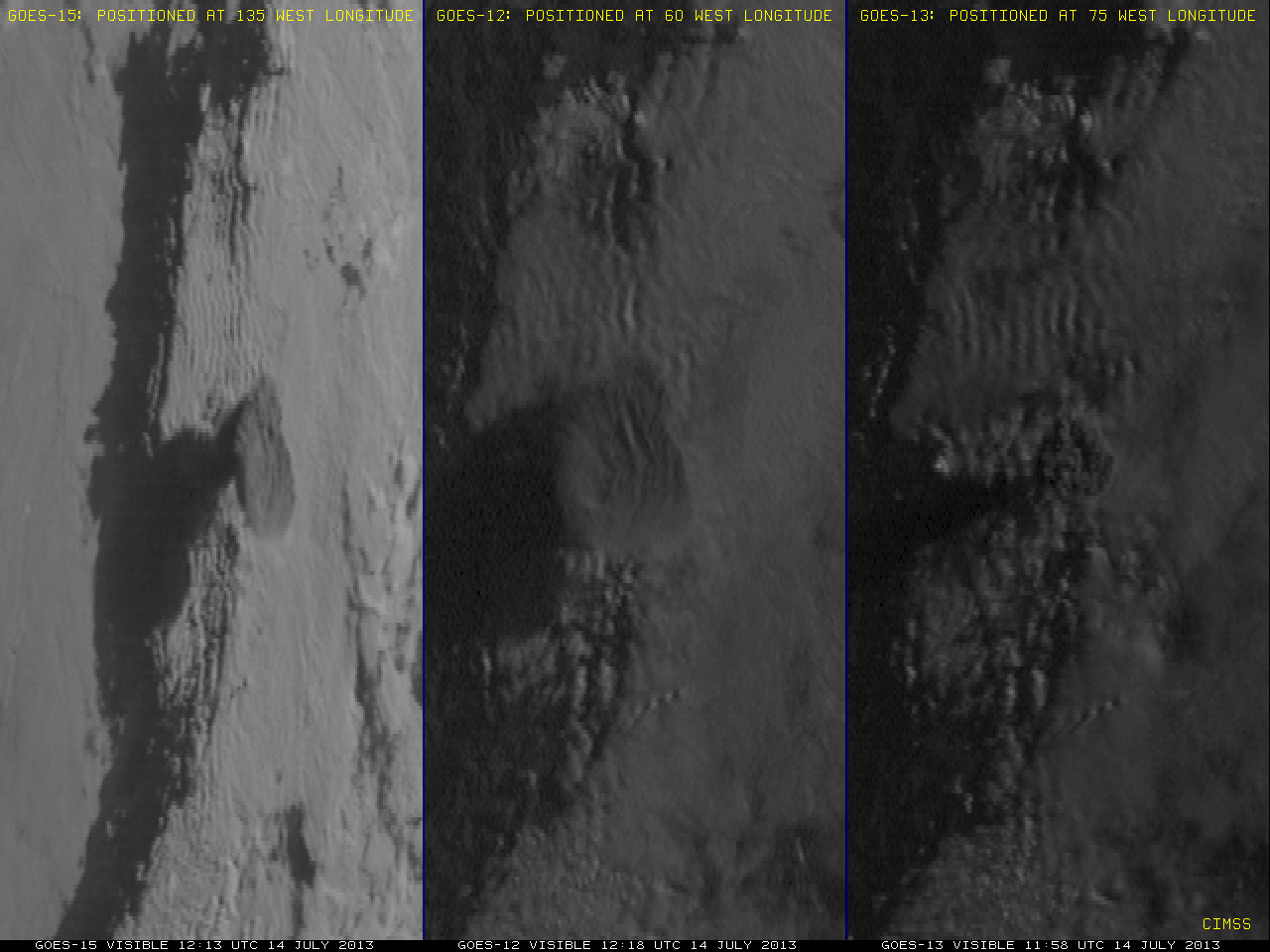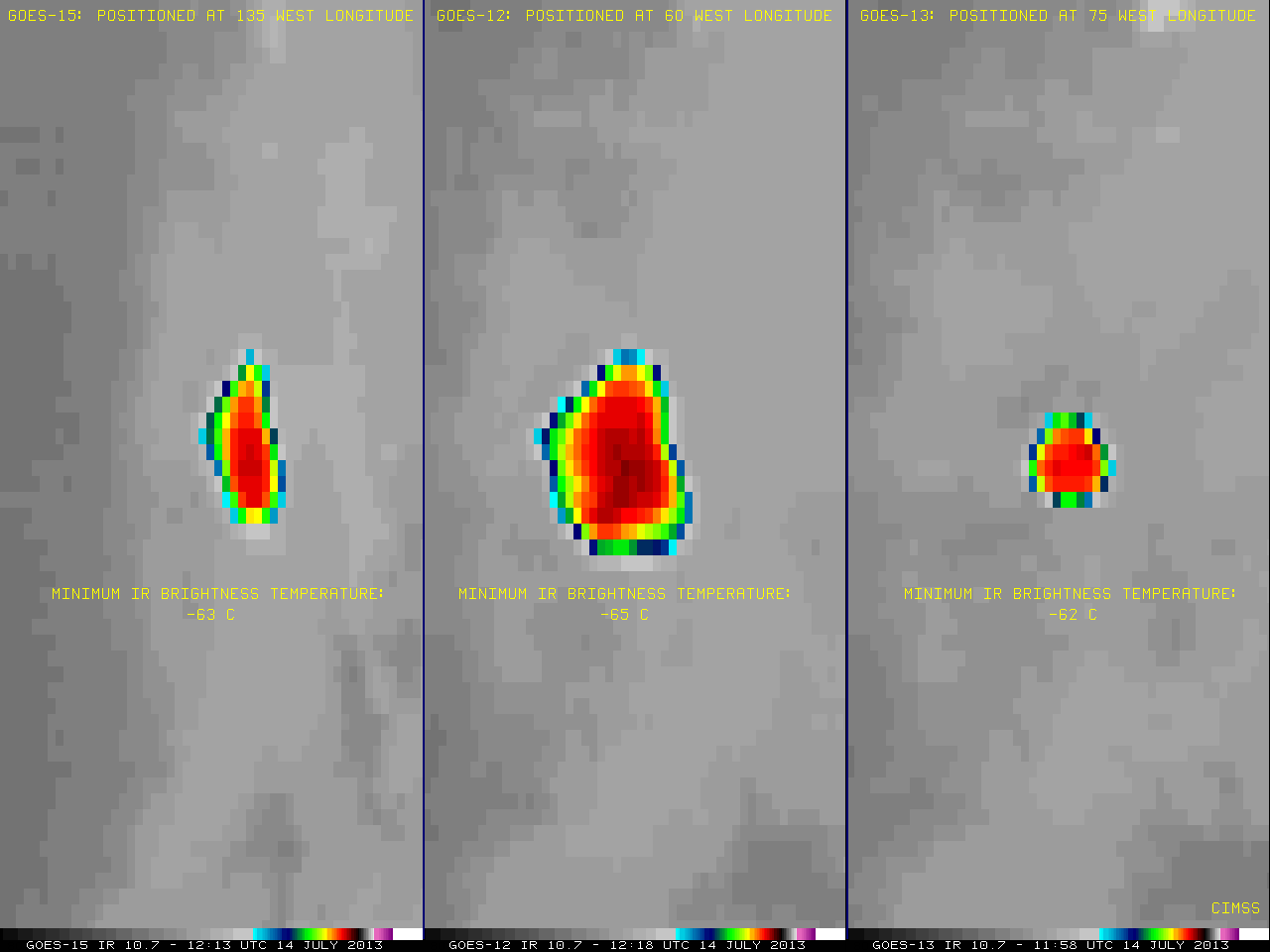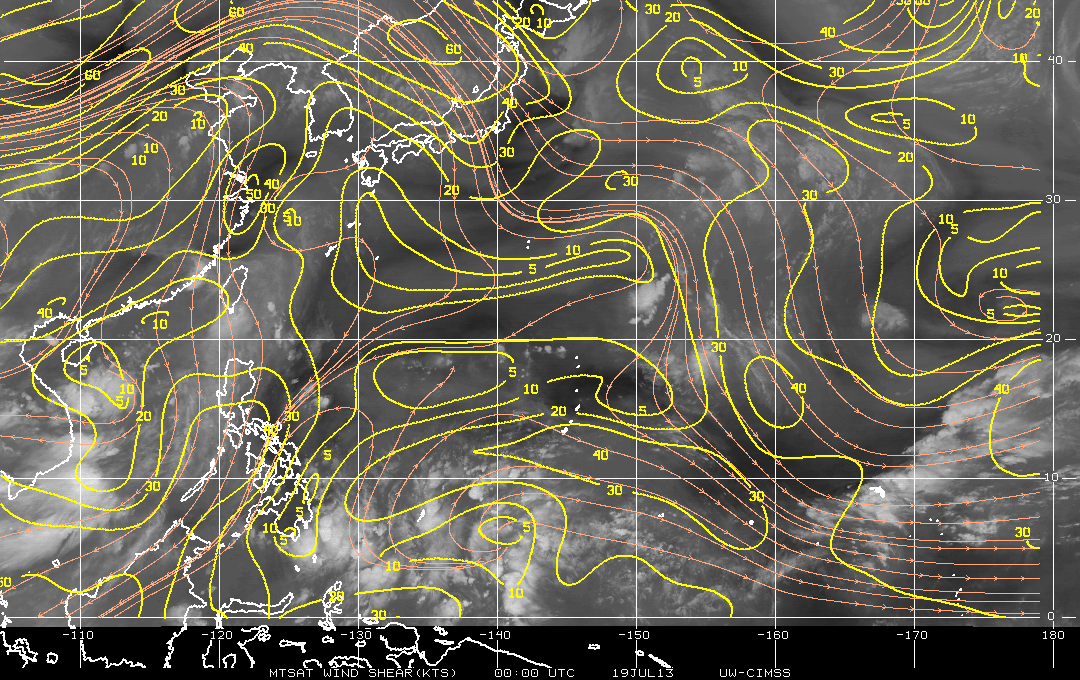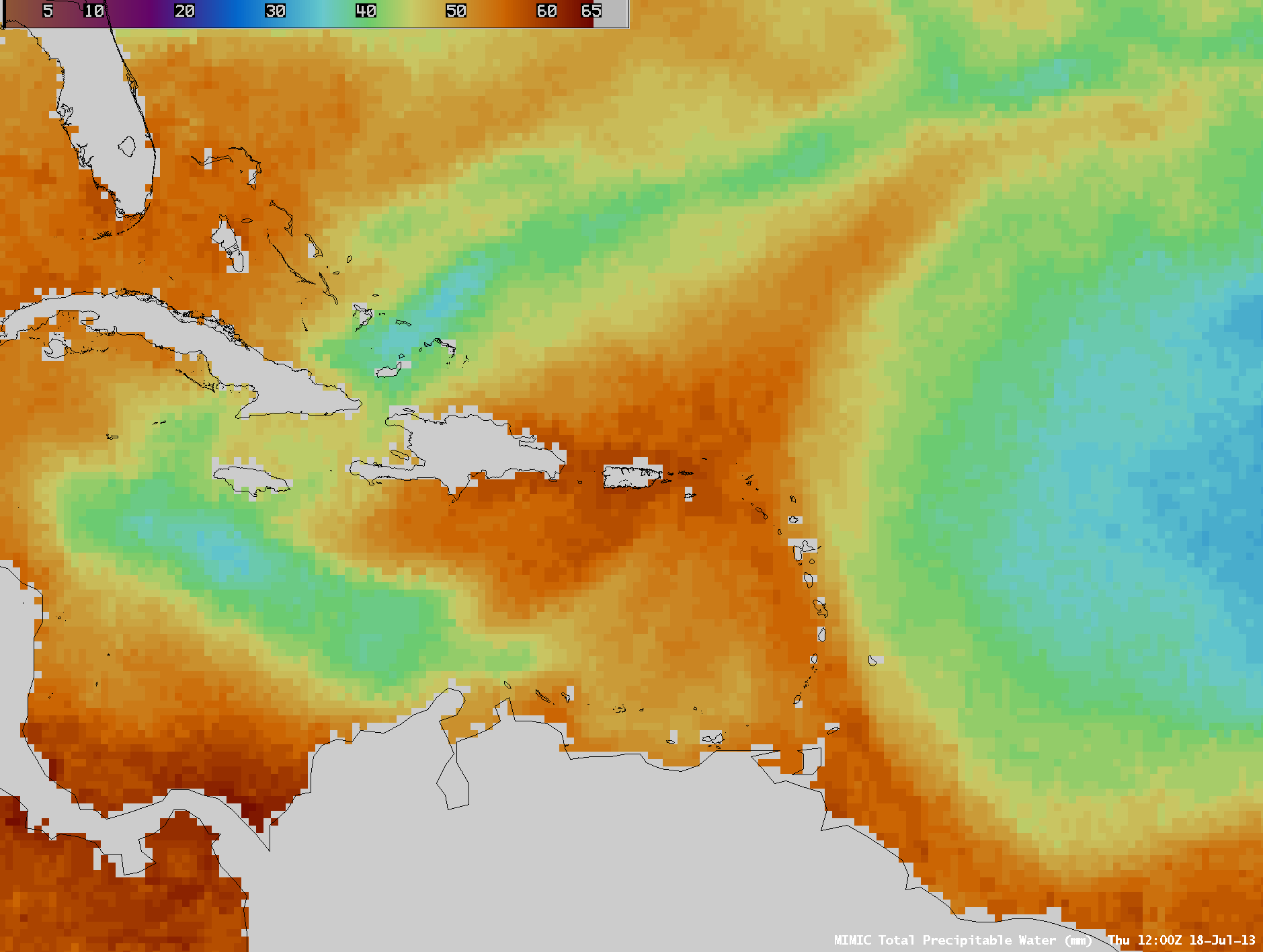Tungurahua is an active stratovolcano in Ecuador (Wikipedia); a Landsat-8 false-color image showed the partially snow-covered dome of the volcano on 13 July 2013. On the following day, the Washington Volcanic Ash Advisory Center issued a Read More

GOES-13 false-color Red/Green/Blue (RGB) image
Tungurahua is an active stratovolcano in Ecuador (Wikipedia); a Landsat-8 false-color image showed the partially snow-covered dome of the volcano on 13 July 2013. On the following day, the Washington Volcanic Ash Advisory Center issued a volcanic ash advisory due to an explosive eruption that occurred at 11:51 UTC on 14 July 2013. A GOES-13 false-color Red/Green/Blue (RGB) image created using the NOAA/CIMSS GOES-R Volcanic Ash Detection Algorithm (above) highlighted a warm thermal anomaly and a volcanic cumulonimbus (based upon very rapid cloud top cooling rates and cold IR brightnesss temperature values) minutes after the eruption began — during the “11:45 UTC” GOES-13 image, the satellite was actually scanning the region of the volcanic eruption at 11:58 UTC.

GOES-15 (left), GOES-12 (center), and GOES-13 (right) visible images
A comparison of the early stages of the volcanic cloud as viewed from GOES-15 (GOES-West), GOES-12 (GOES-South America), and GOES-13 (GOES-East) is shown with visible channel images (above) and IR channel images (below). The actual times that each of the satellites were scaning the region of the volcanic eruption are noted in the labels, and the images are shown in the native projection for each individual satellite.
The GOES-13 satellite was the first to detect to volcanic cloud, since it was scanning the area at 11:58 UTC (about 7 minutes after the beginning of the eruption). The oblique viewing angle from the GOES-15 satellite helped to highlight the darker gray appearance of the ash-laden volcanic cloud, and reveal the long shadow being cast to the west of the tall feature (estimated to be as high as 45,000 feet above ground level). The volcanic cloud appeared largest on the GOES-12 images due to the more direct viewing angle, as well as the later scan time.

GOES-15 (left), GOES-12 (center), and GOES-13 (right) IR images
Animations depicting the volcanic cloud evolution are shown using GOES-12 0.65 µm visible channel, 6.5 µm water vapor channel, and 10.7 µm “IR window” channel images (below). Since a large amount of water vapor is usually exhaled during such explosive eruptions, the extent of the volcanic cloud can be more easily followed on the water vapor channel images.

GOES-12 0.65 µm visible channel images (click image to play animation)

GOES-12 6.5 µm water vapor channel images (click image to play animation)

GOES-12 10.7 µm IR channel images (click image to play animation)
View only this post
Read Less






